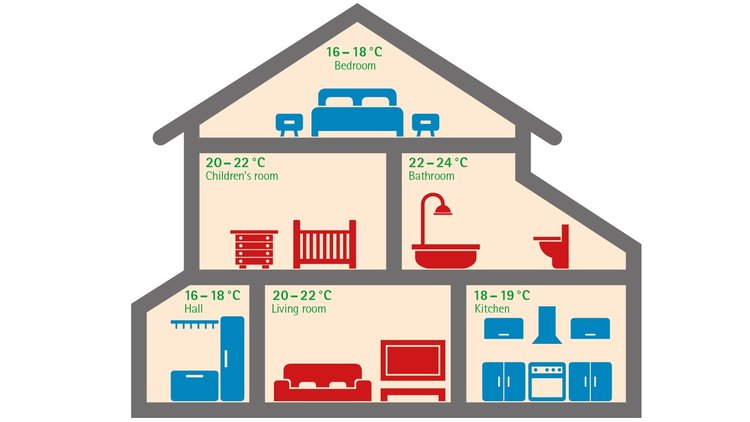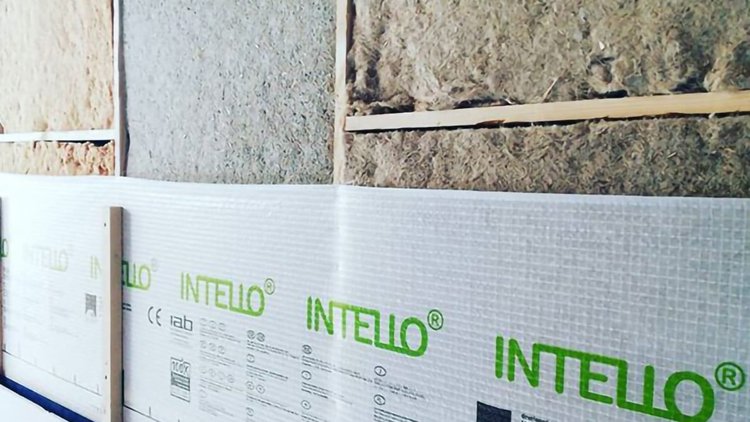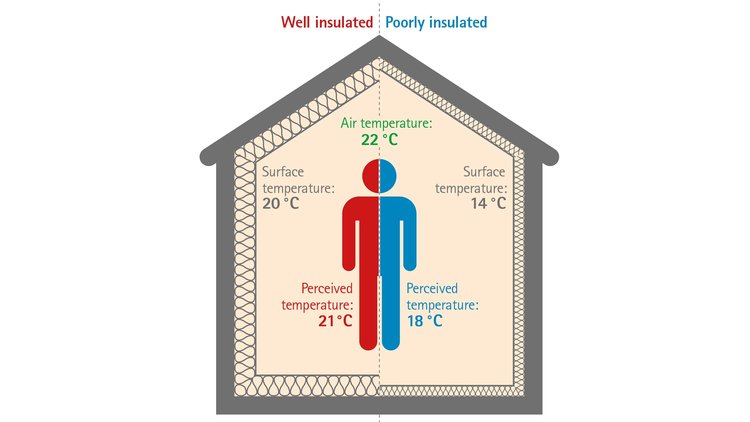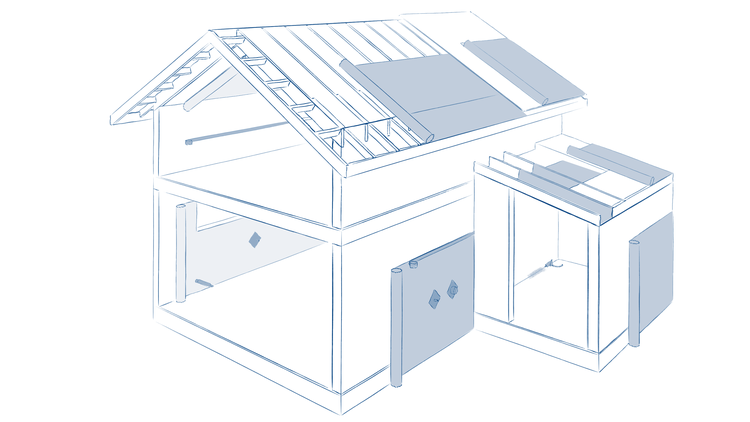Comfort & Sustainability




Comfort
&
Sustainability
Creating
Healthy,
Efficient
Buildings
Our mission is to inspire and educate people to create healthy, durable and energy-efficient buildings to live, learn, work and play in — now and for generations to come.
Here’s how building science drives this mission.
Creating a Comfortable, Healthy Indoor Environment: Building science principles are at the core of designing and maintaining ideal spaces:
Thermal Comfort: Proper insulation, airtightness, heating, ventilation and air conditioning systems keep indoor temperatures stable all year, creating spaces that feel comfortable in every season and climate. By understanding how heat moves and using effective materials, we ensure indoor environments are both energy-efficient and cozy.
Moisture Management: Effective moisture control not only protects a building's durability but also maintains a healthy indoor environment. Strategies informed by building science, like choosing between vapour barriers and vapour control layers help prevent mould and safeguard structural integrity.
Healthy Indoor Air Quality: Fresh air is essential for well-being and productivity, making ventilation a top priority. This requires a solid understanding of air movement and the right systems for ventilation and filtration, ensuring that everyone can breathe clean indoor air.
Enhancing Energy Efficiency
Sustainable buildings aren't just about saving the planet; they go hand in hand with energy efficiency and saving money: a key part of our mission to inspire lasting structures:
Building Envelope Design: Carefully designing the building's exterior helps reduce heating and cooling needs by optimizing insulation, air barriers, and windows, all of which improve thermal performance and save us money.
Certified Passive House Design Strategies: Combining the five PH design principles in order to achieve the best possible performance of the building - Insulated Building Envelope, Airtightness, High-Performance Windows, Thermal-Bridge-Free detailing, Heat Recovery Ventilation System.
Efficient Systems: Choosing the right-sized HVAC, lighting, and other systems based on sound principles ensures these essential functions operate with minimal energy, enhancing sustainability.
Building Code clause H1 Energy Efficiency requires us to use the energy efficiently for heating water, heating & cooling air, dehumidifying air and lighting. The design of the building influences every one of these things. Careful design reduces the energy demand, which can be classed as a sustainable design.
Durability and Longevity
Our mission includes building for generations, and that requires lasting, resilient structures:
Moisture Protection: Properly detailing the building envelope prevents moisture damage, defending against both mould and structural decay.
Material Selection: Selecting materials with compatibility and performance in mind results in longevity and minimal maintenance needs to keep buildings durable and reduce environmental impact.
Resilient Design: Building science helps create structures that can handle environmental stresses now and be built to handle a changing climate, ensuring they remain fit for purpose for many years.
Prioritizing Well-being and Productivity
A people-centered approach to building science enhances comfort, health, and productivity:
Sound Comfort: Good sound insulation and room acoustics make spaces more pleasant and productive, especially in educational and work environments.
External Noise Sources: Busy cities, roads, close neighbours... all of these noise sources can't be changed, but insulation and airtightness help keep them outside.
Visual Comfort: Well-designed natural and artificial lighting can improve mood and reduce eye strain, supporting well-being.
Thermal Comfort: By understanding air movement and radiant temperature, we can plan environments to make them truly comfortable for those inside.
Integrating Systems for a Sustainable Future
Building science encourages a holistic view of buildings as systems:
Comprehensive Design: By treating the building as a complete system, we achieve optimal performance in energy use, comfort, and durability. It might even look good.
Balancing Tradeoffs: Building science helps make informed choices when goals conflict, such as when the amazing view is on the cold side of the house. More glass? Or more insulation?
In line with our mission, these principles guide the creation of spaces that are healthy, energy-efficient, and built to last. By applying these concepts, we can create buildings that meet today’s needs and continue to inspire, educate, and serve for generations to come.
Pro Clima × GoodWrap
In the construction industry, managing plastic waste is a constant challenge, but it doesn’t have to be a burden. Pro Clima has partnered with GoodWrap Recycling to offer a free program for the construction industry to recycle used ADHERO backing film. This system turns plastic waste into a valuable resource, helping to keep it out of landfills and supporting local manufacturing in Aotearoa. Participants benefit from a cleaner worksite and are entered into a monthly prize draw.
Giving old materials a new life is an easy way to help the environment and receive rewards for it.
Small Gap, Big Problems!
How to Build a Better Tomorrow
To celebrate 20 years of INTELLO® and to raise awareness about healthier indoor environments, we've created a short documentary series highlighting key aspects of building quality homes for people. The series is comparing early 1900s villas with modern builds, exploring why many new homes still face issues with moisture, cold, and long-term structural problems.
Learn why airtightness matters and uncover the reasons behind cold, damp, mouldy, and deteriorating buildings in Aotearoa.
Small gap, big problems
Join us as we explore Airtightness — a concept often misunderstood in New Zealand. You may be surprised by what we uncover.
Airtightness Part 1
Why do early 1900s Villas remain the gold standard? Haven't we learned anything in the past 120 years?
Airtightness Part 2
Why are our new buildings still cold, damp, and short-lived?






